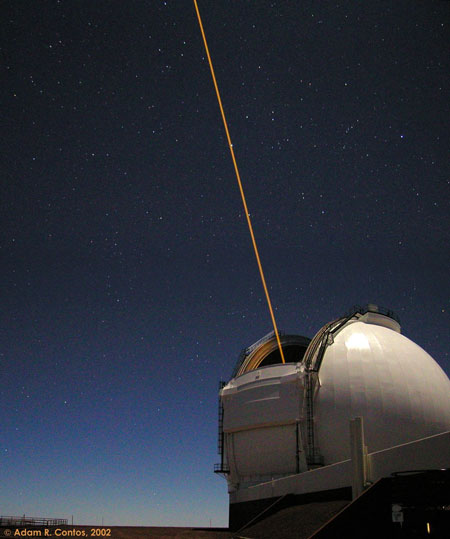
Credit & Copyright: Adam Contos (Ball Aerospace)
Explanation: What do you get when you combine one of the world's most powerful telescopes with a powerful laser? An artificial star. Monitoring fluctuations in brightness of a genuine bright star can indicate how the Earth's atmosphere is changing, but many times no bright star exists in the direction where atmospheric information is needed. Therefore, astronomers have developed the ability to create an artificial star where they need it -- with a laser. Subsequent observations of the artificial laser guide star can reveal information so detailed about the blurring effects of the Earth's atmosphere that much of this blurring can be removed by rapidly flexing the mirror. Such adaptive optic techniques allow high-resolution ground-based observations of real stars, planets, nebulae, and the early universe. Above, a laser beam shoots out of the Keck II 10-meter telescope on Mauna Kea in Hawaii in 2002, creating an artificial star.